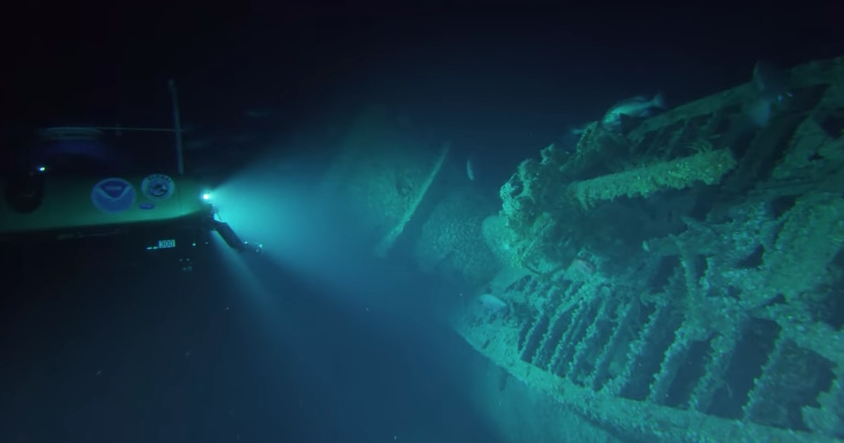The Sinking of U576
For most of 1942, the horrors of WWII lived on the doorstep of the Outer Banks. German U-boats, lurking just offshore, sent more than 600 Allied ships to a watery grave that year, most of them between the Virginia border and Ocracoke.
There were a number of reasons for the carnage. American forces were slow to adapt convoys or air patrols, although at least some of the problem was a shortage of ships and aircraft for that duty. It also took a while for the US to adapt blackout rules, and at night U-boats wreaked a terrible toll on ships that were silhouetted against the lights of the shoreline.
Yet occasionally, the Allies were able to trap a German sub and when they did its fate was invariable sealed.
That was certainly the case with U576.
There were no survivors when it went to the bottom on July 15, 1942, and recent research has revealed some interesting information and raises some questions about what happened that fateful night.
Its approximate location had been known since it disappeared beneath the waves in its final action, but it wasn’t until 2014 that the remains of the sub were located about 30 miles east of Cape Hatteras in 720’ of water.
Source: https://en.wikipedia.org/wiki/German_submarine_U-576
Video: NOAA First Look at World War II Shipwrecks Off NC Coast.webm
Author: oceanexplorergov
Finding the wreck, though, didn’t answer perhaps the most important questions: what sank the U576.
The story of its final cruise is has been recorded. The ship left the Nazi U-boat pens at St. Nazaire at the mouth of the Loire River in France, on June 16, 1942. The crew was young; at 29 Kapitänleutnant (Captain Lieutenant) Hans-Dieter Heinicke was the oldest crew member.
It was the fifth time the submarine had taken to sea that year and its toll of three confirmed ships sunk was considered low at that time in the war. The summer cruise did not seem to be going any better.
On July 13, U576 had been surprised on the surface by Allied aircraft and the attack had damaged the ship’s main ballast tank. Heinkcke radioed his superiors that repairs could not be affected at sea and he was heading home, reporting moderate seas on July 15.
He was probably heading east when, later that day, the crew spotted the 19 freighters and five escorts of convoy KS-520.
Heinkcke submerged and fired four torpedoes. All the torpedoes struck their targets, damaging two ship and sinking the Nicaraguan registered freighter Bluefields. The crew of the Bluefields was able to abandon ship.
Then, in a maneuver no one can explain, Heinicke surfaced in the middle of the convoy. It is possible the damaged ballast tank malfunctioned; or it may have been some extraordinary error in judgment. Whatever the reason, when the ship appeared, patrolling US Naval aircraft and the escort ships opened fire.
Reports from the time indicate a depth charge dropped from an airplane slid off the sub and detonated. Debris was seen flying from the sub and an oil slick appeared. However, the submarine slipped beneath the waters in what appeared to be a controlled dive.
Until the U576 was located in 2014, it was the last anyone saw of the ship.
In the fall of 2018 that a NOAA submersible equipped with a laser imaging camera was able to create a detailed image of U576 as its final resting place. That detailed image raises questions rather than provide answers.

What is apparent from the imagery is that all the escape hatches are intact, indicating its final dive was a controlled dive. The craft does not show visible damage, and although 720’ is approaching its maximum operational depth, the Type VIIC U-boat class of submarine was designed to survive dives as deep as 750’.
The conclusion of experts is that there was a mechanical malfunction that prevented the submarine from resurfacing. The most likely explanation is the ballast tanks malfunctioned, sealing the fate of the crew.
An interesting side note to the site of U576—the Bluefield, the final victim of Heinkcke and his crew, rests on the seafloor just 240 yards from the submarine.
